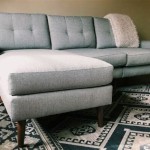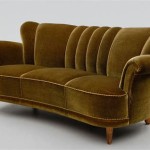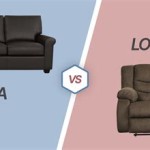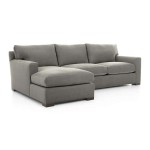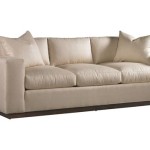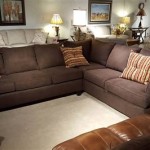```html
The Size of a 2 Seater Sofa: A Comprehensive Guide
A 2 seater sofa is a popular choice for smaller living spaces, apartments, or as an additional seating option in larger rooms. Its compact size allows for flexibility in placement while still providing comfortable seating for two individuals. Understanding the typical dimensions of a 2 seater sofa is crucial for making an informed purchase that fits both spatial constraints and aesthetic preferences. This article will delve into the standard size ranges, factors influencing dimensions, and considerations for ensuring the selected sofa meets specific needs.
When discussing the size of a 2 seater sofa, several measurements are critical. These include overall width, depth, and height. The width determines how much floor space the sofa will occupy, while the depth influences seating comfort and the amount of space required in front of the sofa for movement. The height affects the overall visual profile of the furniture and can contribute to the perceived spaciousness of the room.
The average width of a 2 seater sofa typically ranges from 58 inches (147 cm) to 78 inches (198 cm). The depth, which is the distance from the front of the sofa to the back, generally falls between 30 inches (76 cm) and 40 inches (102 cm). The height, measured from the floor to the top of the backrest, usually ranges from 30 inches (76 cm) to 36 inches (91 cm). These measurements represent general averages, and variations can occur based on design style, armrest size, and backrest height.
Key Point 1: Standard Dimensions and Variations
The term "2 seater sofa" isn't an absolute definition of size. While there are average dimensions, variations are commonplace due to design differences and manufacturers' individual specifications. For instance, a modern sofa with slim armrests might occupy less width compared to a traditional sofa with rolled arms. Similarly, a sofa with a high back might exceed the average height measurement.
Furthermore, the internal seating area, the space available for occupants to sit, can differ significantly even within the general dimensions of a 2 seater sofa. A sofa with thick, plush armrests might have a narrower internal seating area than one with streamlined armrests. This internal seating area directly affects the comfort and usability of the sofa for two people.
It's also vital to consider leg height. Sofas with higher legs often provide a more open feel to the space, allowing for easier cleaning underneath and contributing to a lighter visual appearance. Lower legs, conversely, can give a sofa a more grounded and substantial look. The choice of leg height should align with the overall aesthetic of the room and personal preferences.
When evaluating sofa dimensions, it is recommended to consult the manufacturer's specifications directly. These specifications offer the most accurate information for a particular model and can prevent surprises upon delivery. Digital representations and floor models, while helpful, may not always accurately reflect the precise measurements due to perspective and manufacturing tolerances.
Moreover, the style of the sofa significantly impacts its dimensions. A contemporary, minimalist design might prioritize clean lines and reduced bulk, resulting in a smaller footprint. Conversely, a traditional Chesterfield-style sofa, with its deep button tufting and rolled arms, will invariably occupy more space. The intended aesthetic should therefore be a primary consideration when assessing the size of a 2 seater sofa.
Key Point 2: Factors Influencing Sofa Size
Several factors contribute to the overall size of a 2 seater sofa. These factors include the armrest design, backrest style, and the type of cushioning used. Each of these elements can significantly alter the overall dimensions and the perceived size of the sofa within a space.
Armrests can range from slim and streamlined to thick and rolled. Slim armrests minimize the overall width of the sofa, while thicker armrests, which are often found in traditional designs, contribute to a wider profile. The height of the armrests also affects the overall height of the sofa and the comfort of the seating experience. Some armrests are designed for leaning and resting, while others are purely decorative.
The backrest style also plays a crucial role. A high backrest provides increased support and a more formal appearance, but it also increases the overall height of the sofa. A lower backrest can create a more relaxed and casual feel, while also minimizing the visual impact of the sofa in the room. Some backrests are straight and upright, while others are angled for added comfort.
The type of cushioning used also affects the dimensions of the sofa. Overstuffed cushions, while offering a comfortable seating experience, can add to the overall depth and height of the sofa. Thinner, firmer cushions might result in a more streamlined and compact design. The choice of cushioning should align with the desired level of comfort and the overall aesthetic of the room.
The frame material also influences the overall size, albeit indirectly. A solid wood frame, while durable, might require thicker components compared to a metal frame, which could impact the overall dimensions. Manufacturers often consider the trade-off between material strength and size when designing sofa frames.
Furthermore, features like built-in recliners or storage compartments will inevitably increase the overall dimensions of the sofa. Sofas with these features may require additional clearance around them to allow for proper operation and access.
Key Point 3: Considerations for Choosing the Right Size
Selecting the appropriate size of a 2 seater sofa requires careful consideration of several factors beyond just the average dimensions. These factors include the size of the room, the existing furniture, the intended use of the sofa, and personal preferences.
The size of the room is the most obvious limiting factor. In a small room, a larger 2 seater sofa might overwhelm the space and make it feel cramped. It's crucial to measure the available space accurately and choose a sofa that leaves adequate room for movement and other furniture. Consider the flow of traffic within the room and ensure that the sofa does not obstruct pathways.
The existing furniture in the room also influences the choice of sofa size. The sofa should complement the existing furniture in terms of scale and style. A large sofa might look out of place in a room filled with delicate and smaller pieces of furniture. Consider the height and width of existing tables, chairs, and other seating options when selecting a sofa.
The intended use of the sofa is another important consideration. If the sofa is primarily intended for lounging and relaxation, a deeper and more comfortable model might be preferable, even if it occupies more space. If the sofa is primarily intended for formal seating, a more upright and compact design might be more appropriate.
Personal preferences also play a significant role. Some individuals prefer a more spacious seating area, while others prioritize a more compact and intimate feel. The choice of sofa size should ultimately reflect personal comfort and aesthetic preferences.
Before making a purchase, it's recommended to use painter's tape to mark out the dimensions of the sofa on the floor. This allows for a visual representation of the sofa's footprint and helps to assess whether it will fit comfortably within the space. Also, consider the dimensions of doorways and hallways to ensure that the sofa can be easily delivered and installed.
Finally, consider the potential for future changes in the room's layout or the addition of new furniture. Choosing a versatile and appropriately sized sofa will ensure that it remains a functional and aesthetically pleasing piece of furniture for years to come.
Beyond these core aspects, material choice, cushions, and other design elements can subtly impact the perceived size of the sofa. Lighter colors and fabrics tend to make a sofa appear less bulky, while darker colors can make it seem more grounded and substantial. The design of the legs can also influence the perceived size; exposed legs often create a lighter and more open look, while upholstered bases can make the sofa appear more solid.
Ultimately, selecting the right size 2 seater sofa requires a blend of accurate measurements, careful consideration of room dynamics, and a clear understanding of personal needs and preferences. Taking the time to thoroughly assess these factors will help ensure a satisfying and functional addition to any living space.
```
Fairyland 71 25 Modern Loveseat Sofa 2 Seater Couch Living Room Furniture Grey

Nill Astonic 2 Seater Fabric Sofa Beige

Byron Grey Fabric 2 Seater Sofa Set Furniturein

Flash Furniture Mk Ke15709 Gg Bright Beginnings Modular Classroom Soft Seating Armless 2 Seater Sofa Neutral Vinyl

Parker Knoll Devonshire Large 2 Seater Sofa Aldiss

William 2 Seater Sofa Linen Blend Fabric Timeless Comfort Fabuliv

Buy Marina Two Seater Sofa In Suede Fabric Getmycouch

Sofa Dimensions For 2 3 4 5 6 Person Couches Diagrams Included Home Stratosphere

79 8 In Beige Linen Upholstered Square Arm 2 Seater Loveseat Sofa With Wood Legs

Pieve 2 Seater Sofa



